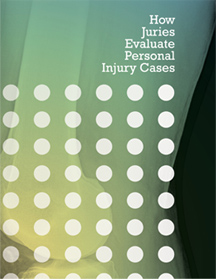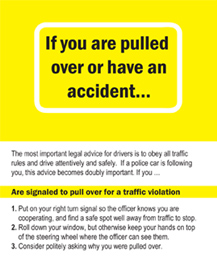Case illustration
Mediation and settlement conference procedure
Settlement negotiations frequently use the services of a third party attempt to mediate a settlement in a car accident lawsuit.
Also, trial judges usually initiate or promote settlement discussions at some point in the process.
In a typical mediation or settlement conference, generally, the lawyers and the mediator (if it is mediation) or the judge (if it is a settlement conference) convene at a neutral site. The location may be in the mediator’s office or in the judge’s chambers or courtroom. Both sides state the facts, the injuries, and the areas of contention. The personal injury lawyer goes first, outlining the medical contentions, and concluding with a demand. If there have been prior negotiations, the parties inform the mediator or judge of the present posture and the present status of negotiations.
Sample fact pattern
For this sample of settlement negotiations, assume the following fact pattern:
An elderly woman was a seat-belted passenger in a car that was hit by a car that ran a stop sign. The woman had her arm fractured in the collision. She also had pre-existing degenerative arthritis in her right hip, and she sustained severe bruising and needed a right hip replacement. Her doctor will testify that the automobile accident was a factor in bringing about the need for the hip replacement. However, a defense doctor will testify that the hip replacement was due to the pre-existing arthritis and the bruising in the accident was incidental.
The defendant’s policy coverage is limited to $300,000.
Prior negotiations
Before the mediation or settlement conference the woman’s personal injury lawyer may have felt that a jury could go either way, and demanded $200,000. The defense lawyer claims that the only provable injury is the arm fracture and that the total value is $35,000.
Possible mediation or settlement scenario
After all parties have set out their general positions, the intermediary (either mediator or judge) generally will excuse the defense lawyer and hold a private discussion with the plaintiff’s lawyer. Often, the first question to be asked is “what are you really looking for?”
At this point the plaintiff’s personal injury lawyer is expected to provide a number lower than the original demand. Therefore, the plaintiff’s lawyer tells the intermediary that the plaintiff would be willing to settle for $150,000. However, the lawyer also takes this opportunity to justify and support the plaintiff’s position as well as point out the weaknesses in the defense case. For example, the lawyer may point out that the woman suffered from arthritis for 20 years and always refused any significant intervention beyond medication. Now, a mere three months after the accident, she has submitted to surgery.
Then the intermediary excuses the plaintiff’s lawyer and calls in the defense lawyer. The defense lawyer points out the weaknesses in the plaintiff’s case, and says that $35,000 is full compensation for this lawsuit and that is all the carrier is willing to offer.
The intermediary has now heard the positions of both sides. Ideally, the intermediary selects a middle number and works both sides toward that number. If the intermediary thinks that the case should settle for between $85,000 – $100,000, then he or she communicates to each side a sum that is slightly greater or less than that amount.
For example, the intermediary tries to talk the plaintiff into accepting $75,000 if it becomes available. In response, the plaintiff’s lawyer may indicate that he or she would recommend $125,000 but absolutely nothing less. The intermediary will emphasize the weakness in the woman’s case, including her age, and point out that if the jury does not believe that the hip replacement was caused by the car accident then a verdict could be as low as $25,000.
Using a mirror approach, the intermediary then chooses a sum slightly more than his or her private figure and requests that the carrier offer the amount of $125,000. In this way the intermediary has bracketed the case in the $75,000 – $125,000 range. At this point, the defense lawyer might counter with an offer of $50,000.
There will continue to be much back and forth discussion. If the intermediary is skillful, he or she will sense when one side has gone as far as it can go for the time being. If this happens, the intermediary may adjourn discussions and reconvene after some time has passed. This permits everyone to save face and permits a party who had begun to take an intransigent position to modify it without losing face. Eventually, the two sides move toward the middle ground. The ideal situation is where the intermediary’s figure is reached.
Based upon the “bracketing”, and questions on damages and probable cause, this lawsuit might settle for between $85,000 – $100,000.



